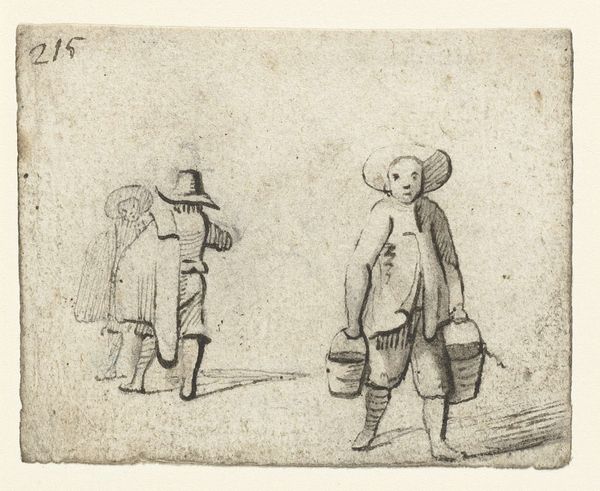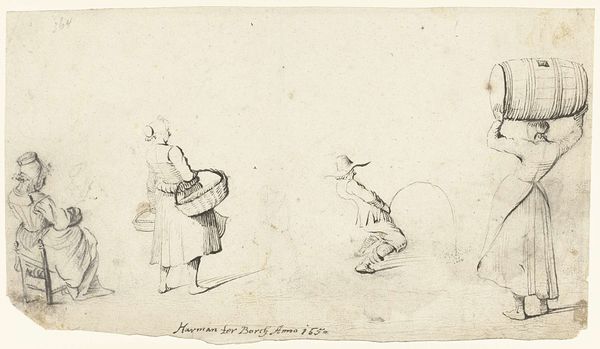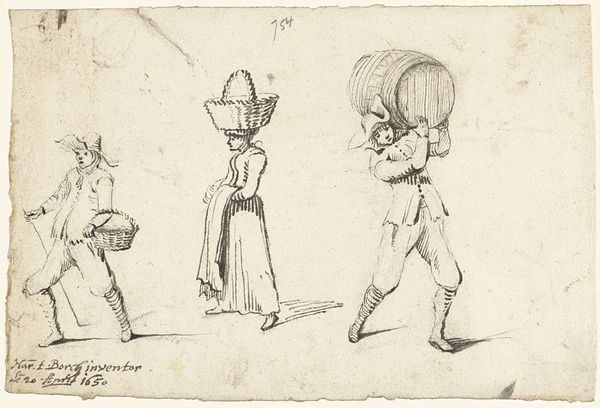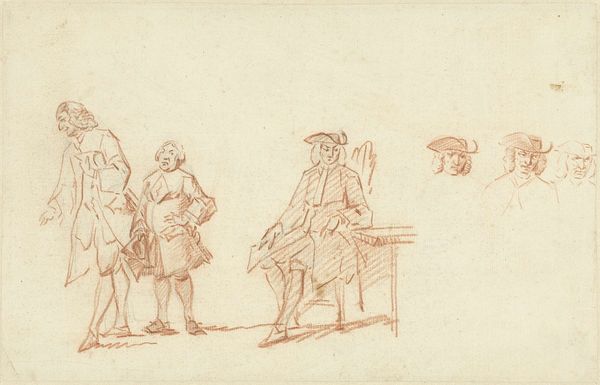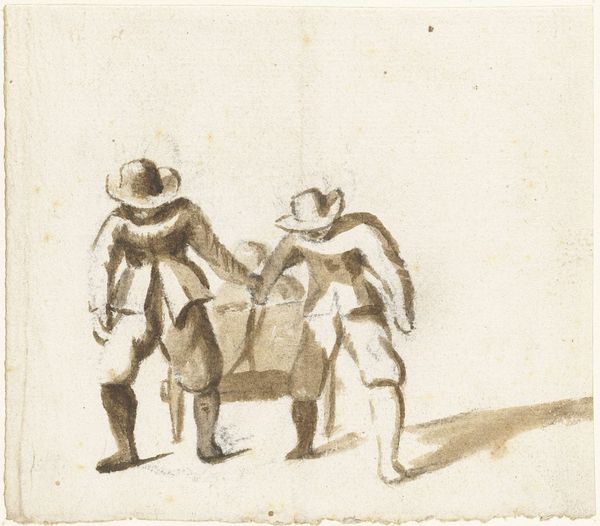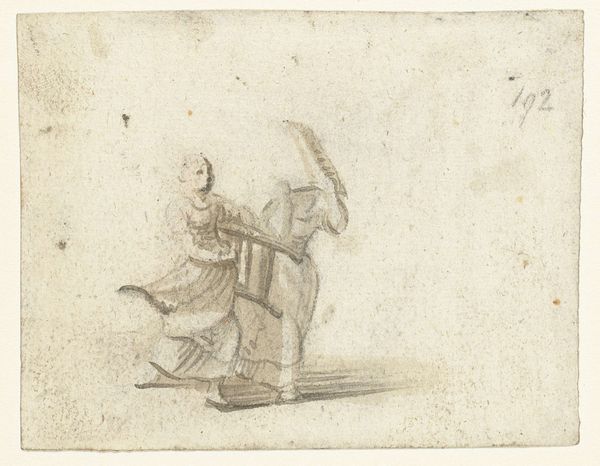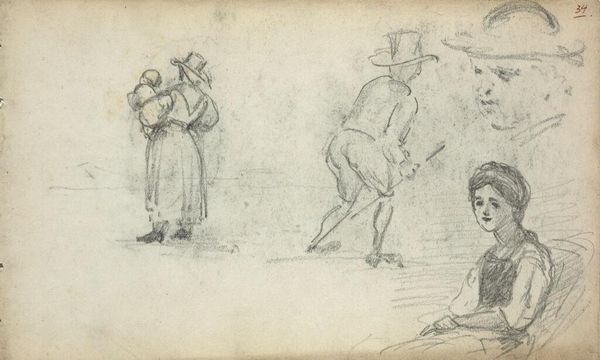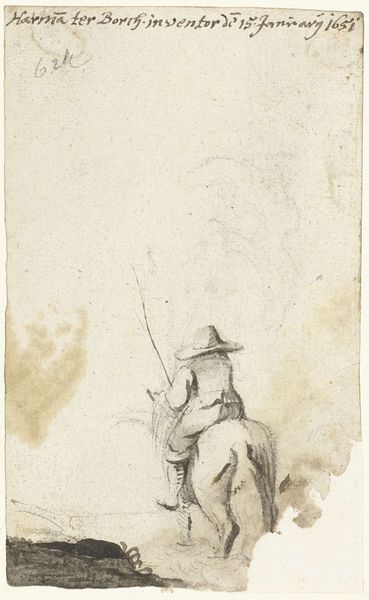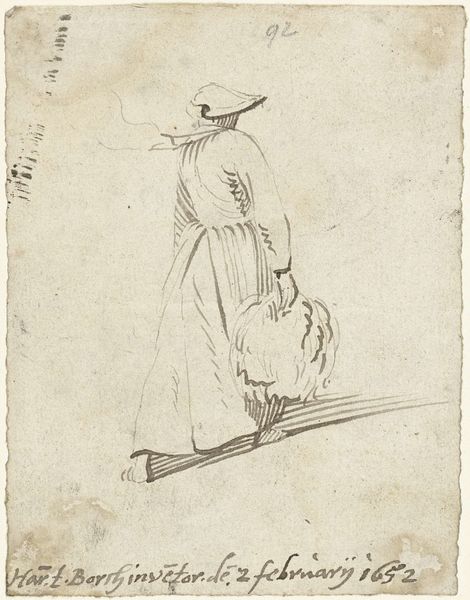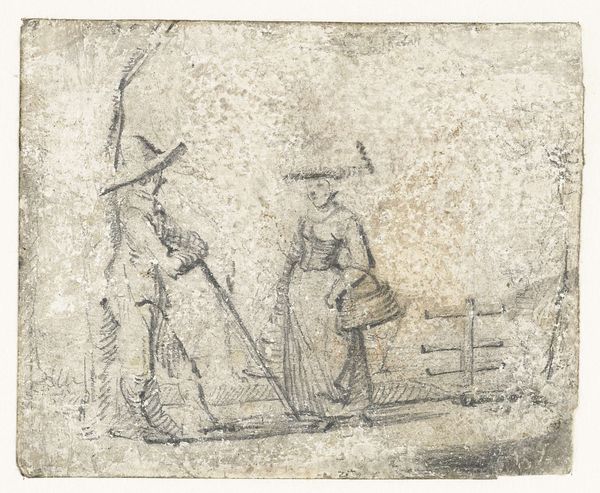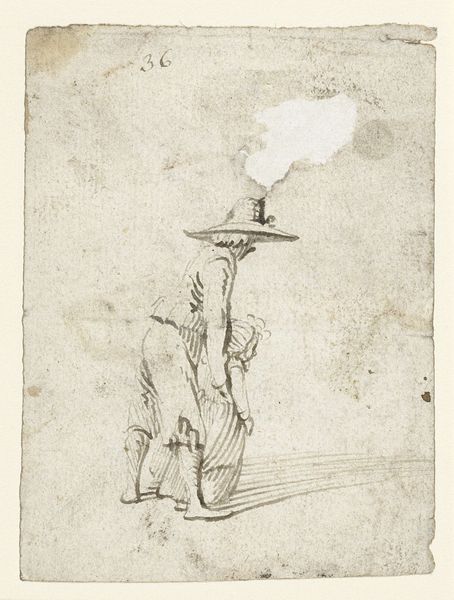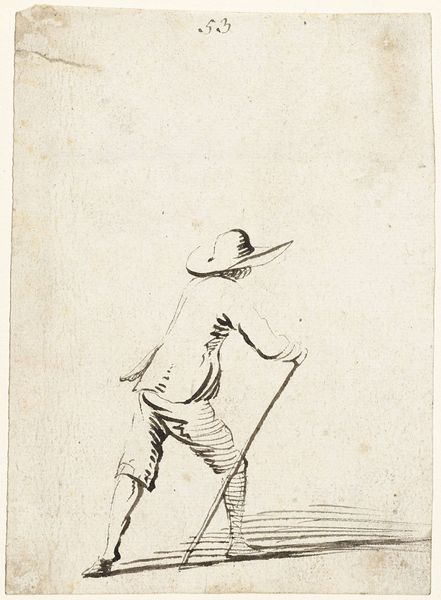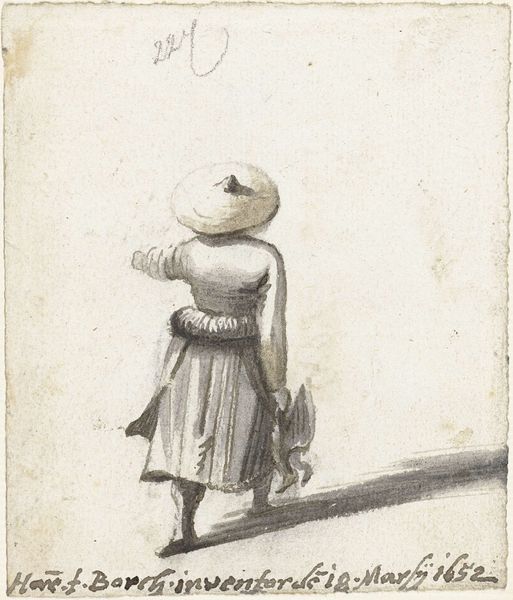
drawing, pencil
#
drawing
#
dutch-golden-age
#
pencil sketch
#
landscape
#
figuration
#
pencil
#
genre-painting
Dimensions: height 100 mm, width 158 mm
Copyright: Rijks Museum: Open Domain
Editor: This is Harmen ter Borch’s “Woman with Scale and Man with Basket, From Behind,” made around 1650. It's a pencil drawing and really captures a specific moment in time. There’s something so everyday about it, yet also distant. How do you interpret this work? Curator: It's tempting to see this drawing as simply a genre scene, an unremarkable glimpse into 17th-century Dutch life. But I wonder, who are these people? What is their labor? Ter Borch’s choice to depict them from behind, anonymized and carrying the weight of their tasks, raises crucial questions about social class and labor within the Dutch Golden Age. Editor: So you’re saying it’s not just a snapshot, but maybe a statement? Curator: Precisely. Consider the Dutch Republic's booming economy fueled, in part, by colonial exploitation. How might this seemingly simple sketch reflect, perhaps unconsciously, the labor that underpinned that wealth? How does the composition itself—the backs turned, the suggestion of burdens carried—invite a reading about the lives of working people who often remained unseen? Editor: That gives me a lot to consider, it feels very relevant today! Curator: Absolutely! Art provides a mirror to society, both past and present. Analyzing ter Borch's choices invites a conversation about power dynamics, representation, and how we view those who perform essential labor even now. What do you take away from our discussion? Editor: That everyday images can still contain rich histories, and also tell an intersectional story. Thanks, that's very helpful.
Comments
No comments
Be the first to comment and join the conversation on the ultimate creative platform.
